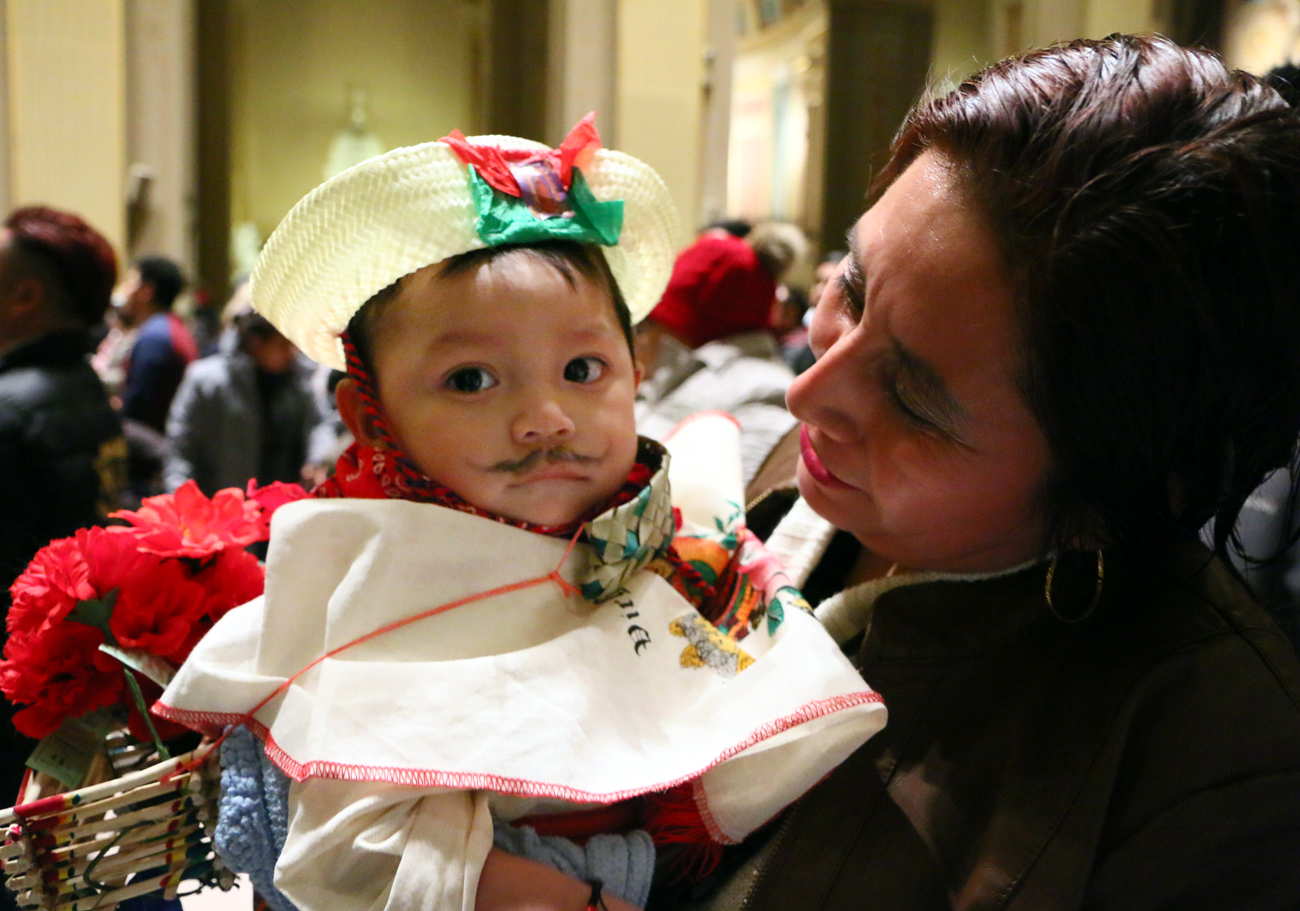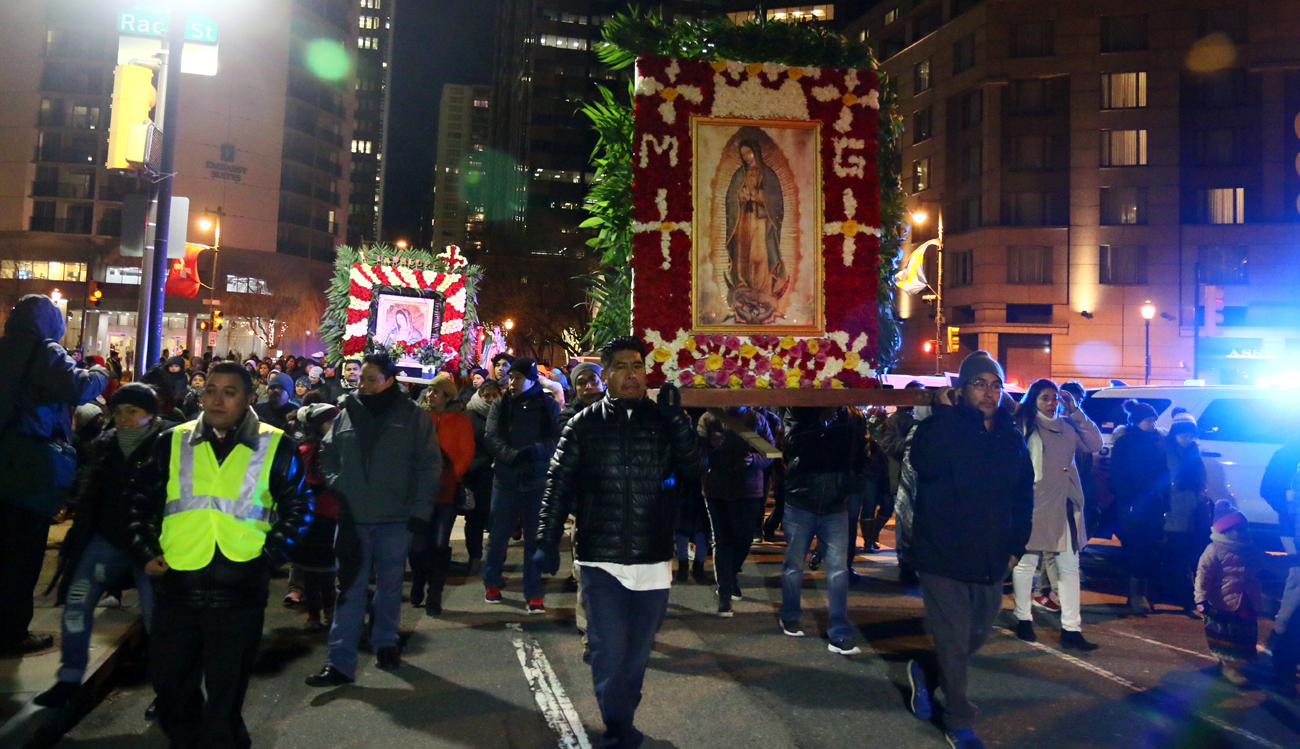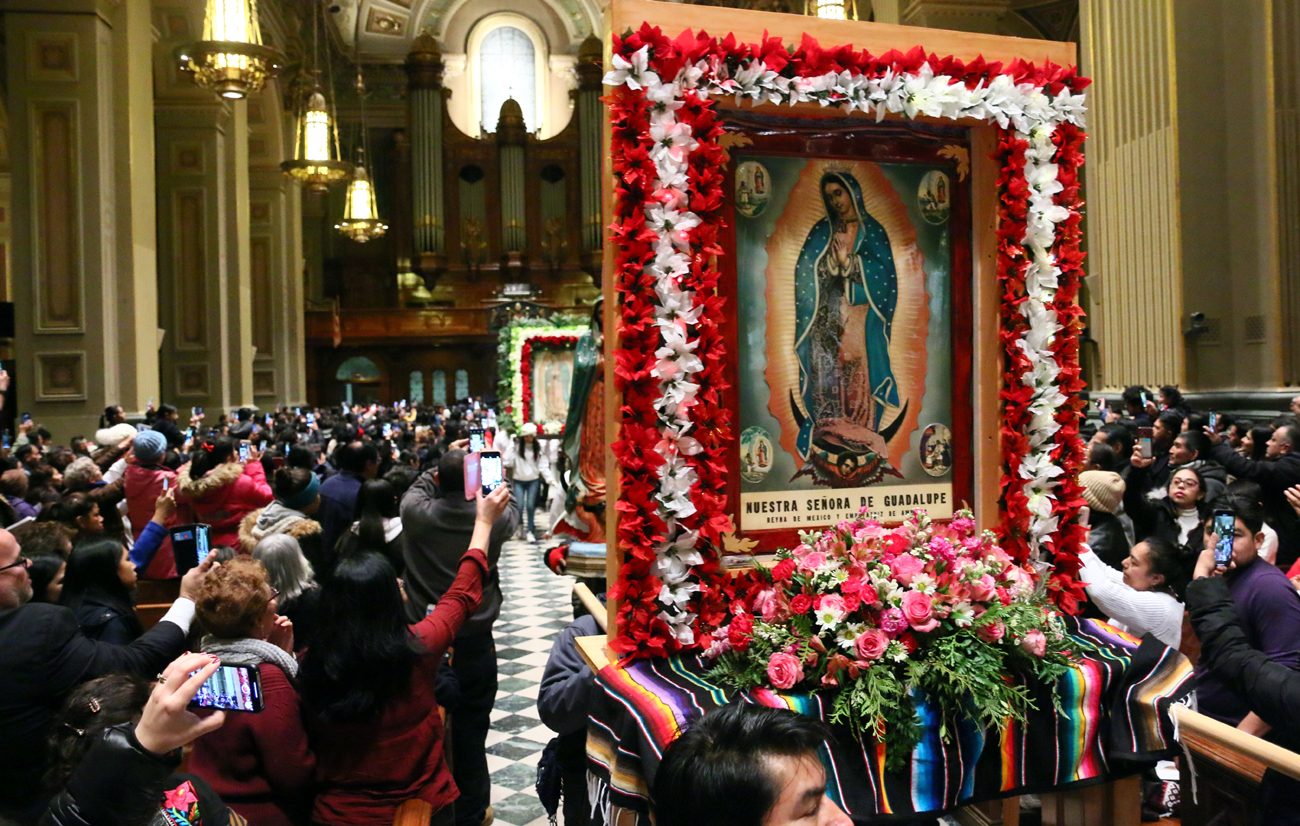More than 1,500 faithful filled the Cathedral Basilica of SS. Peter and Paul in Philadelphia on Wednesday night, Dec. 11, to celebrate the Vigil Mass for the feast of Our Lady of Guadalupe on Dec. 12.
(See scenes from the Mass in our photo gallery here, and watch a video of the festivities here.)
Long revered in Mexico, Our Lady of Guadalupe was declared the patroness of that nation by Pope Benedict XIV, and formally named patroness of the Americas and of the New Evangelization by St. John Paul II, who established her feast day as Dec. 12.
Despite frigid temperatures and often biting winds, many of those in attendance walked in procession up to five miles to the cathedral, representing several Philadelphia parishes including St. Thomas Aquinas, Sacred Heart of Jesus and Annunciation B.V.M. in South Philadelphia, and Visitation B.V.M., St. Michael, St. Veronica and its St. Hugh of Cluny worship site, and Holy Innocents and its St. Joan of Arc mission site in North Philadelphia.
[hotblock]
The procession featured traditional dance and music, including a mariachi band, while the liturgy’s choir and small orchestra ensemble performed under the direction of composer Damaris Thillet.
A number of pilgrims, particularly young children, were dressed as St. Juan Diego, the 16th-century Aztec Indian to whom Mary appeared in December 1531 at a hill called Tepeyac, now in modern-day Mexico City.
The saint, who prior to his baptism had been called Cuauhtlatohuac, was initially disbelieved when he reported the initial Dec. 9 vision to the bishop, Juan de Zumarraga. The cleric asked for a sign to verify the apparition’s authenticity, and in a second encounter on Dec. 12, Mary provided Diego with a several blooming roses, which he carried to the bishop in the “tilma,” or cape, worn by locals. As Diego opened the tilma to present the flowers, an image of the apparition was found mysteriously impressed upon the fabric.
Scientists remain unclear as to how the image, now housed at the National Basílica de Santa María de Guadalupe in Mexico City, was created, or how it has remained unfaded and intact after almost 500 years.

Dressed as St. Juan Diego, Diego Rivera, seen here with his mother Moreno of St. Thomas Aquinas Parish in Philadelphia, attends a Dec. 11 vigil Mass for the feast of Our Lady of Guadalupe at the Cathedral Basilica of SS. Peter and Paul. (Sarah Webb)
According to Philadelphia Auxiliary Bishop Edward M. Deliman, however, the real miracle is the effect that Mary’s appearance had on both Mexico and all those who honor her as Our Lady of Guadalupe.
Speaking in Spanish, Bishop Deliman — who served as the principal celebrant and homilist for the Mass — said that “the culture of Mexico changed with the apparition of the Virgin of Guadalupe.”
According to several analysts, as many as 9 million Aztecs converted to Catholicism after the appearances.
Noting that Mary had presented herself to Juan Diego as an indigenous rather than Spanish woman, Bishop Deliman said that Mary’s influence “crosses and transforms borders,” and “invites us to share our Catholic identity independent of our national origins.”
In so doing, Mary “invites us to change our culture and our attitudes, to welcome the stranger, to practice hospitality, and to be the voice of those who live on the margins of society,” said Bishop Deliman.
St. Juan Diego may have felt he was seen as “un don nadie (a nobody),” due to poverty and racial discrimination, Bishop Deliman said, but “there are no nobodies in the family of God.”
Mary and Juan Diego were both chosen by God, said Bishop Deliman, as were those present at the Dec. 11 Mass.
“Our baptismal identity calls us to be the best disciples of the faith and the Gospel,” he said. “We are the chosen of 2019, to know Christ, to share the message of the Gospel.”

Pilgrims process through the streets of Center City Philadelphia with a police escort toward the Cathedral Basilica of SS. Peter and Paul and a vigil Mass for the feast of Our Lady of Guadalupe. (Sarah Webb)
PREVIOUS: They stand up, and speak up, for sanctity of life
NEXT: Fishtown Catholic school’s shutterbugs putting skills on exhibit




Share this story